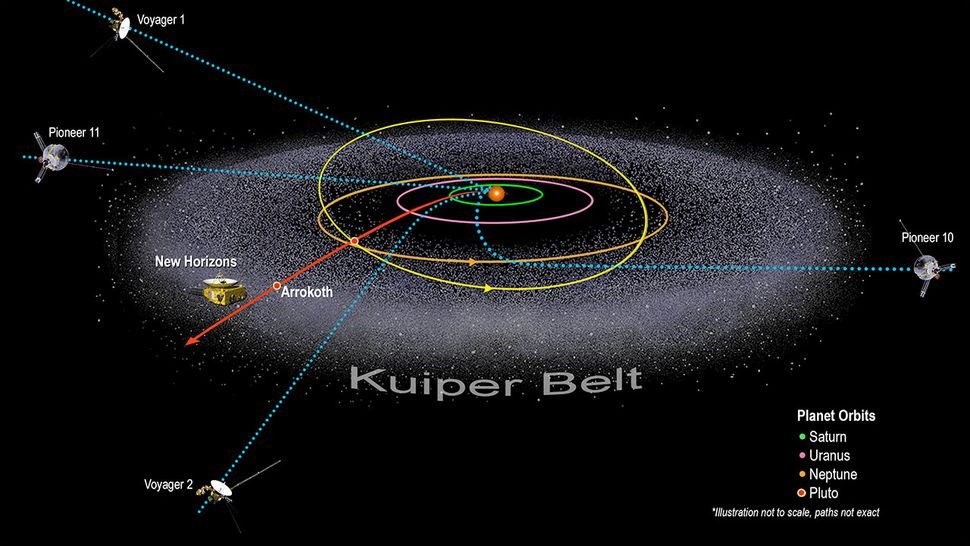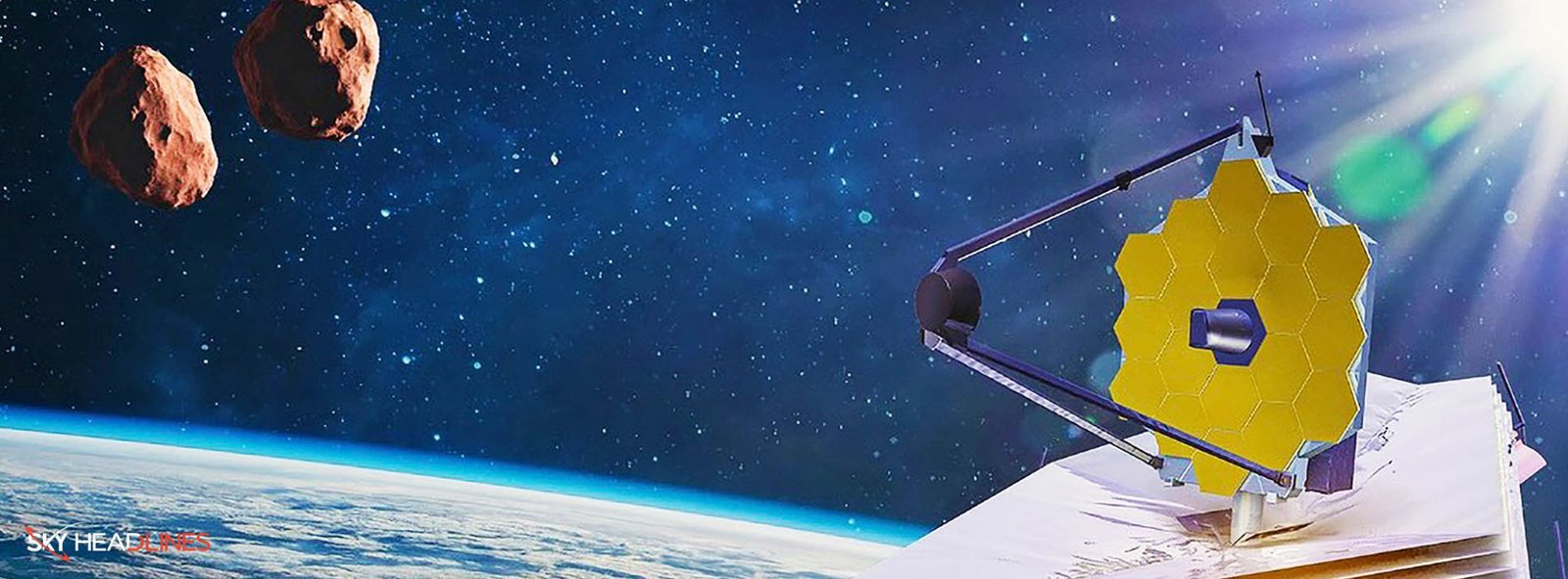Icy Asteroids: Unlocking the Secrets of Our Solar System
For decades, asteroids have been relegated to the realm of science fiction as the menacing space rocks hurtling towards Earth. However, recent discoveries are revealing a far more intriguing reality. Icy asteroids, lurking in the fringes of our solar system, are emerging as time capsules holding secrets to the formation of planets, the evolution of ice giants like Neptune, and even the origins of water on Earth.
Icy Compositions: A Cocktail of Ice and Rock
Unlike their rocky counterparts found in the inner solar system, icy asteroids reside in the frigid realms beyond the orbit of Mars. The Kuiper Belt, a vast reservoir of icy objects stretching beyond Neptune, is home to many of these celestial bodies. Asteroids like 24 Themis, studied by NASA, showcase a fascinating composition. Spectroscopic analysis reveals a surface coated in a thin film of ice, likely frozen water. Interestingly, this icy veneer appears to be constantly replenished, suggesting a hidden reservoir of water ice beneath the surface.
These icy components are often mixed with rock and dust, forming a cosmic “dirty snowball.” Carbonaceous chondrite meteorites, believed to originate from icy asteroids, support this theory. Studies of their composition reveal the presence of organic compounds and hydrated minerals, indicating a rich mix of water ice, rock, and organic materials.
Formation in the Frigid Depths: A Solar System Relic
The formation of icy asteroids is intricately linked to the birth of our solar system. Some four and a half billion years ago, a swirling disk of gas and dust combine to form the Sun and planets. The leftover icy material in the outer solar system lumped together, forming the icy bodies that we now know as asteroids and comets.
The frigid temperatures in the outer solar system allowed for the condensation of water ice, leading to the formation of these icy conglomerates. Studying their composition allows us to peer back in time, revealing the primordial conditions that existed during the formation of our solar system. These icy relics hold a record of the early solar system’s environment, offering valuable insights into the processes that shaped our celestial neighborhood.
The James Webb Space Telescope: Piercing the Veil on Icy Secrets
The recent exploration of the icy binary asteroid system Mors-Somnus by the James Webb Space Telescope exemplifies the valuable role icy asteroids play in unraveling the mysteries of the solar system.This fascinating pair of icy rocks originate from the Kuiper Belt, a region heavily influenced by the gravitational pull of Neptune. By studying the composition of Mors-Somnus, scientists hope to gain insights into the formation and evolution of Neptune, particularly its icy mantle.

The icy composition of Mors-Somnus provides clues about the building blocks that formed Neptune and other ice giants in our solar system. Understanding the origin and composition of these icy bodies sheds light on the dynamic history of the outer solar system, helping us piece together the puzzle of how our solar system came to be.
Icy Asteroids and the Origins of Water
Water, the essential ingredient for life as we know it, remains a crucial question in planetary science. Icy asteroids are emerging as a prime suspect in delivering water to the terrestrial planets early in their formation. Studies of Martian meteorites, believed to originate from impacts by icy asteroids, suggest that a bombardment of these icy bodies in the first 100 million years after Mars’ formation could have provided enough water to cover the planet in a vast ocean.
Earth’s water likely has a similar origin story. The bombardment of early Earth by icy asteroids is thought to have delivered a significant portion of the water that now fills our oceans and sustains life. Studying icy asteroids not only helps us understand the formation of our solar system but also offers clues about the prevalence of water-bearing environments and the potential for life beyond Earth.
Icy Riches: A Future Resource for Space Exploration
The abundance of water ice on some asteroids makes them potentially valuable resources for future space exploration endeavors. Mining icy asteroids could provide a readily available source of water for human missions venturing beyond Earth. Water is not just essential for human life support but can also be broken down into its constituent elements, hydrogen, and oxygen. Hydrogen, a highly efficient fuel source, could power rockets and other spacecraft, enabling deeper exploration into the cosmos.
The potential to extract resources from icy asteroids presents exciting possibilities for establishing a sustainable human presence in space. By utilizing the resources found on these celestial bodies, we can reduce our dependence on Earth-launched supplies and pave the way for the development of permanent outposts on the Moon, Mars, or even beyond.
Icy Asteroids – A Window into the Future.
The exploration of icy asteroids is not just about unlocking the secrets of the past; it also holds the key to our future endeavors in space. Missions like the Dawn mission to the dwarf planet Ceres and the upcoming Lucy mission to the Trojan asteroids are shedding new light on the diversity and complexity of these icy bodies. As we develop new technologies and telescopes, our ability to study icy asteroids from afar and potentially send missions to collect samples will continue to improve.
Challenges and Opportunities
Despite the exciting discoveries, studying icy asteroids presents several challenges. The vast distances involved make close-up observations difficult, and the harsh environments of the outer solar system pose significant engineering hurdles for spacecraft. However, these challenges also present opportunities for technological advancements.
The development of more powerful telescopes, improved spacecraft propulsion systems, and innovative techniques for sample return will be crucial in furthering our understanding of icy asteroids. International collaborations and public-private partnerships can play a vital role in accelerating these advancements.
The Search for Life: Icy Worlds and the Potential for Habitable Environments
The presence of water ice on asteroids raises intriguing questions about the possibility of life beyond Earth. While the frigid conditions on most icy asteroids make it unlikely for life as we know it to exist on their surfaces, the possibility of subsurface oceans or hydrothermal vents similar to those found on Europa, a moon of Jupiter, cannot be entirely ruled out.
Studying the composition of icy asteroids, particularly those originating from the outer fringes of the solar system, might reveal the presence of organic molecules, the building blocks of life. Additionally, icy asteroids that have undergone collisions or impacts from other celestial bodies could harbor pockets of water ice mixed with rock and organic materials, creating potentially habitable environments.
The Future Beckons: Unveiling the Secrets of Icy Asteroids
Icy asteroids are more than just frozen chunks of rock and ice; they are cosmic time capsules holding the key to unlocking the history of our solar system, the origins of water on planets, and the potential for life beyond Earth. As we continue to explore these celestial wanderers, we can expect even more groundbreaking discoveries that will redefine our understanding of our place in the universe. The future of space exploration is intricately linked to icy asteroids, and with each mission and discovery, we inch closer to unraveling the mysteries they hold.
Further Exploration:
This section can include a brief list of resources for those interested in learning more about icy asteroids. This could include links to NASA websites, scientific articles, or documentaries. Additionally, consider adding the following elements to further enhance the content:
Images and Diagrams: Including visuals like pictures of icy asteroids, diagrams of their structure, or illustrations of spacecraft missions can significantly enhance reader engagement.
Case Studies: Highlighting specific icy asteroids and the discoveries associated with them can personalize the content and make the information more relatable.
Ethical Considerations: Briefly discuss the potential ethical implications of asteroid mining, such as the need for responsible resource utilization and planetary protection measures.





